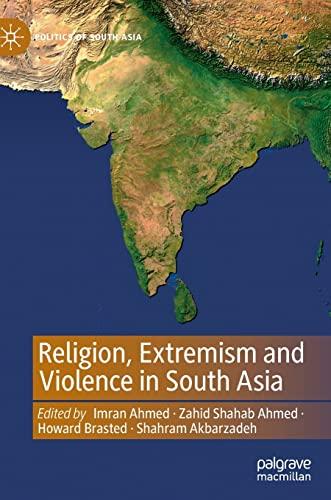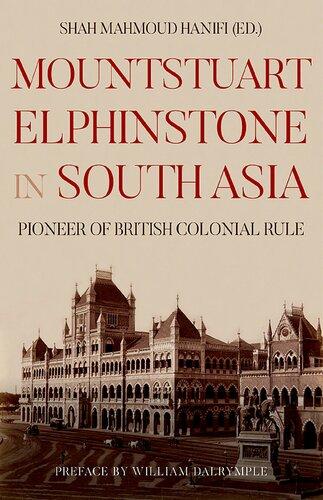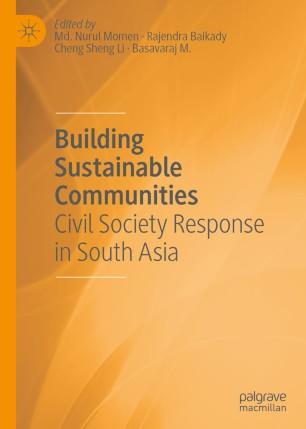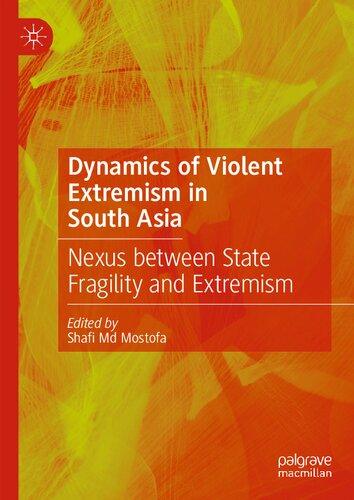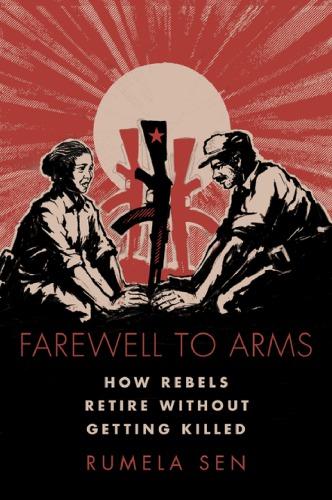GLOBALPERSPECTIVESFROM SOUTHASIA
KristinPlys,PriyanshandKanishkaGoonewardena UniversityofToronto,Canada
ABSTRACT
Inthisintroductiontothespecialissue, ‘MarxistThoughtinSouthAsia’ ,we detailthelonghistoryofMarxistpoliticsandtheorizinginSouthAsiaand highlighttheuniquecontributionsandperspectivesofSouthAsianMarxiststo globalMarxism.Threecontributionswe findparticularlysignificantare(1) SouthAsianMarxists’ approachtothinkingaboutquestionsofcapitalism, colonialismandimperialism,(2)thetreatmentofagrarianandfeudalcontinuitiesinMarxisttheoriesfromSouthAsiaand(3)uniqueSouthAsian contributionstotheorizingcastefromaMarxistperspective.
Keywords:Marxism;SouthAsia;capitalism;imperialism;agrarianrelations; caste
MarxismisnotjustaEuropeanpreoccupation.Ithas,perhaps,hadevenmore vibrantarticulationsinLatinAmerica,AfricaandamongtheBlackdiaspora. ButSouthAsiahasbeenrelativelyneglectedineffortstohighlightGlobalSouth revolutionarytheoreticaltraditions.Ourgoalinthisissueistodemonstratethe historicalandcontinuedrelevanceofMarxistthoughtinSouthAsiabyboth highlightinglesserknownthinkersaswellaspromotinganti-imperialistMarxist approachestorevolutionarythoughtmorebroadly.Oureffortsarenotsolelyto makeMarxismrelevanttoSouthAsiaagain,buttodemonstratehowSouth AsianMarxismscancontributetoglobalMarxisttheory.Inotherwords,our effortistorecovertheSouthAsianrevolutionarytraditionfortherestofthe world.Insodoing,thisspecialissueinterrogatesthenexusofanti-colonialism
MarxistThoughtinSouthAsia PoliticalPowerandSocialTheory,Volume40,1–17
Copyright©2024KristinPlys,PriyanshandKanishkaGoonewardena PublishedunderexclusivelicencebyEmeraldPublishingLimited ISSN:0198-8719/doi:10.1108/S0198-871920230000040002
andMarxism.Together,theseessaysareforgingananti-imperialistMarxism basedonempiricalworkinSouthAsiaandbeyondbyunsettlingthepropensity withinvariousdiscourses(includingcertainstrandsofMarxism)todisproportionately fixateonwhitemaletheorists.Ouressayscontributetoanti-imperialist Marxismthroughdialecticalandhistoricalapproachestotheorizing.Whilewe aredoinganti-imperialistMarxismintheSouthAsiancontext,weseethisas beingintheserviceofaglobalMarxismthatisbothanti-imperialistandnonEurocentric.
Acrossthesocialsciencesandhumanitiesoflate,bothcapitalismandthe post-colonialhavebeencentralobjectivesofinquiry.Buttheseparalleltrendsare oftenatloggerheads.Theextremesofthepost-colonialpositionassertthecentralityofraceandcolonialisminshapingmodernitywhiledisavowingtheroleof classandcapitalism,whilethereturntocapitalismthathasbeencentralinhistory butotherdisciplinesaswellhasbroughtaboutavibrantrevivalofworkinlabour historyandhistoriesofcapitalism.However,unliketheEurocentricworkof someinfluentialMarxists,thesenewhistoriesoflabourandcapitalismaremore globalinscopeandfocusedonthepoliticaleconomyoftheGlobalSouth.In bringingthesetwopositionstogether,manyinthehumanitiesandsocialsciences haveturnedtoconceptsofracialcapitalismandpost-colonialpoliticaleconomy whichhasmeantrecoveringthetheoriesandvoicesofracializedMarxistsliving andworkingintheGlobalSouth.Thisisadevelopmentwewelcomeandcelebrate.WhileAfrican,Blackdiaspora,LatinAmericanMarxistshavebeencentral tothisendeavour,andwhiletoalesserextentEastAsianMarxistssuchasHo ChiMinhandSukarnohavealsobeenapartofthisconversation,SouthAsian Marxistvoiceswhotheorizerace,colonialityandthehistoricaldevelopmentof globalcapitalismhavebeenrelativelyneglectedinthisefforttorevisittheworkof GlobalSouthanddiasporaMarxistsofthe20thcentury.
MARXISMDURINGBRITISHRULE
WhileMarxistacademicsoftheGlobalNorthhavedisproportionatelyfocused ontheworkofAfricanandLatinAmericanMarxistsinrecoveringanti-colonial andanti-racistMarxistperspectives,Marxismhaslong flourishedinAsia.The SouthAsianMarxisttraditionhasalonghistorydatingbacktotheearly19th century.Withtheformalendoftheglobalslavetradeinthe1830s,labourfrom SouthAsiawasmobilizedbytheBritishandFrenchEmpirestoreplaceenslaved workersinBritishandFrenchterritoriesinAfricaandintheBritishWestIndies (Mohapatra,2007,p.178; Sharma,1982,p.17;Fileno.7237/91,PSA).Asa colonialworkingclassinformation,oneoftheuniquefeaturesofthedevelopmentoftheSouthAsianworkingclasswasthatfromthestart,itwascreatedby EuropeanEmpirestobeaglobalworkingclass.BecauseofBritishandFrench strategiesforclassformationinSouthAsia,Leftresponsesagainsttheseconditionseventuallyassumedaninternationalistorientation.Theplantationwasthe primaryenterpriseformostofthecolonialperiod.Labourconditionsoncolonial plantationswereamergerofslaverywithamodernrationalcorporatelabour
regime(Behal,2007,p.158; 2010,p.32; Behal&Mohapatra,2008,p.143; Mehta,1991,p.5).Desertionwasacommonrecourseforworkersto ‘ escape physicalcoercionandtorture’,buttheywouldoftenbecaughtandreturnedto theplantationby chowkidars (securityguards)(Behal,2007,p.159; Behal& Mohapatra,2008,p.161).Insomecases,labouruprisingsoccurred,includingthe BengalIndigoDisturbancesof1859,theBlueMutinyofChamparanin1917in Bihar(Mehta,1991,p.5)andRowmariGardenUprisingin1903(Behal& Mohapatra,2008,p.165),typicallyinreactionagainstviolentassaultsby Europeanplantationstaff(Behal,2007,p.166).
Inthelatterhalfofthe19thcentury,peasantuprisingsandlabourrevoltswere themostcommonformofdissentagainstcolonialcapital.Theseuprisingswere mostly ‘scatteredandunorganised’ (Sen,1997,p.65),generallyconsistingof informalactionsdirectedatgainingcontrolovertheworkprocessorofspontaneousoutburstsandrioting(Veeraraghavan,2013,p.65).The firstknown strikeinBritishIndiawasaweavers’ strikeinEmpressMills,Nagpurin1877 (Meyers,1958,p.56; Sharma,1982,p.65).Bythe firstdecadeofthe20thcentury,strikesbecamemoreorganized.In1903,astrikeoverunpaidovertimeinthe GovernmentPressinMadraslastedsixmonths(Veeraraghavan,2013,pp. 69–72).In1905,millworkersinBombayorganizedstrikesagainsttheintroductionofelectriclightinfactories,refusingtoworkpastduskandbeforedawn. In1907,anIndia-widerailwayworker’sstrikelastedoneweekandgarneredkey concessions.In1908,workersinvarioussectorsinBombayorganizedapolitical strikeagainstBritishrule(Saxena,1990,p.61).Duringthe1910s,industry, especiallyheavyindustrysuchassteelandiron,intensi fied.Likewise,strikes proliferatedfrom1917on.Theyear1920sawatleast51majorstrikesinSouth Asia,eachstrikeinvolvingasmanyas70to135,000workers(Saxena,1990,p. 78; Sen,1997,pp.120–4).
The firsttwoformaltradeunionorganizationsweretheMadrasLabour Unionfoundedin1918byBPWadiaand MajoorMahajan (AhmedabadTextile LabourAssociation)foundedin1918byMohandasGandhi.TheMadras LabourUnionwascreatedbyagroupoftextileworkersintheBandCMillsin Madras,andwiththehelpofBPWadia,itbecameacitywideorganization consistingofworkersfromvariousindustries – includingtextileworkers, rickshaw-pullers,railwayworkers,printingpressworkers,keroseneoildistributors,aluminiumvesselworkers,barbers,scavengers,policemen,postmenand domesticworkers(Mathur&Mathur,1957,pp.16–17; Veeraraghavan,2013,p. 88).MLU’ s firsttasksweretoamelioratetheeconomicconditionofworkersby raisingwagesandensuringtimelyandaccuratepaymentofwages(Karnik,1978, pp.24–25; Mehta,1991,pp.44–46; Ramanujam,1986,p.14; Veeraraghavan, 2013,p.91).Butoffargreaterconcerntotheunionwastheviolenceinflicted uponworkersbyBritishmanagersinworkplacesacrossthecity(Jha,1970,p.89; Mathur,1964,p.19; Rao,1938,p.14).
MajoorMahajan,ontheotherhand,was ‘abnormal’ foratradeunion,inthat thegoaloftheunionwastocreateclass-cooperationbetweenownersand workers.Ifaworkerwas ‘victimized’ bymanagement,theunionwouldpaythe aggrievedworkeratokensumtopreventlabourunrest(Rao,1938,p.159).MM
wasstaunchlyopposedtostrikes,andfrom1918–1939,workersinAhmedabad struckonlyonce,duringageneralstrikein1924,andthattoowithoutthesupport oftradeunionleadership(Chandavarkar,1998,p.86; Jha,1970,p.100; Meyers, 1958,pp.57–60; Rao,1938,p.160). MajoorMahajan wasalsoanexclusively Hindutradeunion.Asaresultofthiscommunaldiscrimination,Muslimtextile workersinAhmedabadwerenon-unionizeduntilthe1930swhentheycreated MillMazdoorSanghaffiliatedwiththeCommunistPartyofIndia(CPI) (Chandavarkar,1998,p.77).
By1920,125formaltradeunionswerefoundedacrossSouthAsia – inBengal (mostlyinCalcutta),Punjab,Madras,Jamshedpur,Ahmedabad,Burma,Oriya andBombay(Mathur,1964,p.21; Mehta,1991,pp.40–42; Saxena,1990,pp. 83–88; Sen,1997,pp.138–139; Sharma,1982,p.77).Theperiodof1919–1922 sawthegreatestgrowthofpoliticalconsciousnessoftheworkingclass,which coincidedwithagrowingnationalistmovementandworseningeconomicconditions(Roy,1990,p.6).Asaresult,the1920swerecharacterizedbyunprecedentedworkers’ unrest.Thecolonialstaterespondedbyspyingonunionized workers,imprisoningthemandsubjectingthemtopolicesearchandharassment, butalsodevelopedspecialLabourAdvisoryBoardsinMadras,Bengal,Bombay andPunjab(Fileno.5629/69,PSA)asalegalforumthroughwhichtosettle labourdisputes.Whilemostoftherulingsoftheseboardswereinfavourof employers,theLabourAdvisoryBoardsdidrecommendestablishingaminimum wagealongwiththelegalrecognitionoftradeunionsinordertopreventdisputes (Sen,1997,p.140).
In1920,theAllIndianTradeUnionCongress(AITUC)wasformed.Thiswas the firstworkingclassorganizationinSouthAsiathatencompassedallofBritish India.Itsplatformwasgenerallyanti-capitalistandanti-imperialistbutwasalso cautiousnottostoketheireoftheBritishEmpireoroftheGandhianCongress Party(Adhikari,1972,p.206; Karnik,1978,p.33; Sharma,1982,p.151).Inits foundingaddresstoitsmembers,ittookastandagainsttheGandhianindependencemovement, ‘Yournation’sleadersaskforSWARAJ,youmaynotlet themleaveyououtofthereckoning.Politicalfreedomtoyouisofnoworth withouteconomicfreedom’.(Asquotedin Amjad,2001,p.34;Asquotedin Sen, 1997,p.158).Intheirfoundingyear,theAITUChad107memberunions, representingatotalof20,994workers.Mostoftheseunionswerebasedin Calcutta,Bombay,LahoreandJamshedpur.Notably, MajoorMahajan,consistingof6unionsand16,450workers,refusedtojointheAITUCbecauseofthe AITUC’santi-Gandhianline(Mehta,1991,pp.54–55; Ramanujam,1986,p.15; Saxena,1990,p.91).
TheCPIwasformedlaterthatsameyear,on17October1920inTashkent (Adhikari,1972,p.215; Ahmad,1962,p.57; Singh,1994,p.37; Sen,1997,p.170) headedbyMNRoy,MohammedShafiqandMPBTAcharya.In1921,theCPI foundedfourregionalgroupsinBombay,Calcutta,MadrasandLahore.The Bombaygroup,ledbySADange,focusedonthestudentmovementandtradeunion activities(Sen&Ghosh,1991,pp.52–53).InCalcutta,MuzaffarAhmadandpoet NazrulIslamstartedtheCommunistliteraryjournal Navyug in1922,andbegan organizingworkersinandaroundCalcutta(Sen&Ghosh,1991,p.53).TheMadras
groupwasadoptedbytheexistinglabourmovementandledbylabourorganiser, SingaraveluMChettiar.InLahore,thepartywasledbyGhulamHussain,wholeft hisjobasaneconomicsprofessoratPeshawarCollegetofoundtheInquilabGroup (Josh,1979,p.46),whichproducedtheUrdu-languagenewspaper, Inquilab (Josh, 1979,p.47),andtoworkinconcertwiththeRailwayWorkersUnion.
Theaimsofthisburgeoningpartywere,asstatedbySingaraveluChettiar, ‘to winSwarajforthemassesinIndia,topreventexploitationoftheworkersand peasantbysuitablelandandindustriallegislation,tosecuretothebreadwinner,a minimumwagebywhichheandhischildrenshallhavethenecessariesofadecent lifeandtoendalldistinctionsofcaste,creedorsectinallpoliticalandeconomic relationships’ (FirstCommunistConferencePapers,SubfileNo.4,NMML).Their methodtoreachtheseaimswastostrengthentheworkingclassthroughunionization,strategicstrikesandstrikingwith ‘fullforceandeffect’.Fromitsorigins, MarxisminSouthAsiawasanti-colonial,andprimarilydedicatedtoopposingan internationallabourregimeinwhichracializedworkersfromtheGlobalSouth wereplacedatthebottomofracialandeconomichierarchies.
MARXISMAFTERINDEPENDENCE
WhilepoliticalandtradeunionmovementsinspiredbyMarxismplayedadecisiveroleinSouthAsia’smovementsforindependenceinthe1940s,afterIndependencewaswon,MarxismthrivedinsomeregionswithinSouthAsia,whilein others,politicalandsocialconditionsthreatenedMarxistintellectualdevelopmentandpolitics.
InPunjab,whereMarxismwaswellestablishedbeforepartition,thelabour movement,alongwiththeradicalLeft,wasdecimated.IstiaqAhmedcontends thatthedemobilizationofsoldierscontributedtocreatingamoreviolentpartitioninPunjab,asunemployedsoldiersstokedbycommunaltension(andmany sufferingfrompost-traumaticstressdisorderfromtheirparticipationinthe WorldWars)tookituponthemselvestoridtheirtownsandvillagesofthe religious ‘other’ (Ahmed,2011).Theviolencewasnotonlycommunalinnature butalsoinflictedagainsttheLeft.ThegenocidethattookplaceinPunjab debilitatedPunjab’slabourmovement,tradeunionmovementandthe CommunistParty.Thoughdealtadifficulthand,whichwasexacerbatedbythe massdepartureofSikhswhocomprisedamajorityoftheCommunistPartyin Punjab(Ali,2015,p.64),SajjadZaheerandothercommunistsconsolidatedthe CommunistPartyofPakistanintheaftermathofpartition.Whilethemost well-knownCommunistsofPakistan’searlyyearsremainbetterknownfortheir literaryworks,theywerealsocommittedtoresurrectingandbuildingthe CommunistPartyofPakistan(CPP).FaizAhmedFaizcontendedthatwithout addressingthemoreradicalaimsoftheCommunistsintheirsupportfornational independence,nationalliberationinPakistanremainedincomplete.Inresponse tothisstalledrevolution,SajjadZaheerpushedforanevenharderCommunist line,purgingallIslamists,nationalists,liberalsandevenFreudianswho ‘disrespectedloveasapuredesire’ (Ali,2011,p.517;Seealso Jalil,2014,p.356).The
CPPorganizedlabourunionsunderthePakistanTradeUnionFederation (PTUF)eventhoughonly0.8%ofthepopulationwereindustrialworkersand only0.25%wereunionized(Ali,2015,p.74).Mostoftheseunionizedworkers workedingovernment,railwaysandteaplantations.Thoughsmallinnumber, thePTUForganizedkeyeventsinKarachiandLahorewhichputforthan anti-imperialistagendaandunitedcommunistworkers,peasantsandintellectuals toworktogetherto fightbackagainsttherollbackoflabourstandardsandrights afterindependencealongwithPakistan’scooperationwithUShegemony(Ali, 2015,p.75).TheCPPencompassedmanybroadlyLeftmovements,includingthe DemocraticWomen’sAssociation,awomen’slabourassociation,Democratic Students’ Federation,theCPPstudentwingandtheProgressiveWriters’ Association,forwritersandotherartists(Malik,2016,pp.107–108).
Butsocialdislocationintheaftermathofpartitionmadepoliticalorganizing particularlychallengingforthePakistaniLeft,andrelentlessstatepersecution andrepressioneventuallyledtotheRawalpindiConspiracyCaseof1951.Faiz andZaheerwereaccusedbyPrimeMinisterLiaqatAliKhanofmeetingwith disaffectedarmyof ficersinRawalpinditoplanacoup(Jalil,2014,p.372).The actualeventsremainunclear;somecontendthattherewasactuallyadiscussion aboutapossiblecoup,whileotherspresentevidencethatthearrestsweremadeto suppressoppositionintheupcomingelections(Malik,2016,p.119).Asaresult oftheConspiracyCase,manyprominentCommunistleaders,andleadersofthe ProgressiveWriters’ Association,includingFaizandZaheerthemselves,were imprisoned.In1954,thePCCandotherleftistpartieswere,then,officially banned(Ali,2013,p.484; Mir&Mir,2006,p.16; Raza,2013,p.513).Duringhis imprisonment,duringwhichhespentmostofhistimeinsolitaryconfinement, Faizwrotesomeofhismostcriticallyacclaimedpoetry(Dryland,1992,p.180).
ThedevelopmentofMarxisminSriLanka,whileechoingtheIndianexperienceinseveralways,dividesintothreephases.The firstonebeginswiththe formativeengagementofthepioneeringgenerationofradicalSriLankanstudentswithcommunistinternationalisminthelate1920sandculminateswiththeir achievementofsomepost-colonialparliamentarypoliticalpowerin1956.Itwas duringthisperiodthatthemajorMarxistpartiesinSriLankawereformed – the TrotskyiteLankaSamaSamajaParty(LSSP)in1935,anditsbreakawaygroup thatbecametheCommunistPartyofCeylon(nowCPSL)in1943.Intheseyears, theytransformedthemselvesintomassorganizationsofnationalscale,with remarkableinfluenceandsuccessinparliamentarypoliticsaswell.Thesecond periodgoesfrom1956to1977,theheydayofSriLanka’spursuitofpost-colonial nationaldevelopment,duringwhichtimeleadersofMarxistpartiesoccupieda fewkeyministerialpositionsinseveralleftistcoalitiongovernments.Itwasin theseyearsthatMarxistliteraturebecameavailableforthemasses,inEnglish, SinhalaandTamil,althoughMarx’sownwritingsinthisimpressiveLeftliterary productionandcirculationremainedasmallfraction.Theongoingthirdphase canbedatedfrom1977,thebeginningofneoliberalisminSriLankaandthe declineofMarxistpartiesaseffectivepoliticalforceswithinorwithoutparliament.Itismostlyinthispost-1977period,afterthevirtualeliminationofMarxist partiesfromparliamentarypoliticalpower,thatsubstantivereadingsofMarx
andMarxismwereundertakeninSriLanka – invariousattemptstomakesense ofthecountry’shistoryandpolitics – whereasinearlierphases,Marxismwas mostlyamatterofpoliticalstrategy(Jayawardena,1974).
Backinpost-independentIndia,theLeftranintoanumberofstrategictensionsevenasitfunctionedasthemainoppositiontotheCongressPartythathad assumedpowerfollowingthePartition(Namboodiripad,1986).Towardstheend ofcolonialrule,theCPIdevelopeddifferentapproachesforpoliticalactionin urbanandruralareas.Withinayearofindependence,majorurbancentreslike Bombay,MadrasandCalcuttasawariseininsurrectionistactivitiesguidedby the ‘Ranadiveline’ thattookitsnamefromthethengeneralsecretaryB.K. Ranadive.Asitwere,theRanadiveLinequicklypivotedfromtargetingthe BritishEmpiretotheCongressgovernmentfollowingindependencebyarguing thattheindependenceearneddidnotamounttoactualfreedom(Bidwai,2015). Theobjectiveofsuchactionwastodelegitimizethebourgeoisregime,andto createseparateplatformsforapopularassertion.
ForruralIndia,adifferentstrategywasdevised.Asopposedtospontaneous strikeactionsinthecities,theCommunistsinruralareasemphasizedanextended agrarianstruggle,withTelanganaservingastheprimeexample.TheTelangana regionwaspartoftheprincelystateofHyderabadwhereanetworkoflandlords servedtheNizamthroughasystematicexploitationofdebt-riddenandunpaid labourers(Bidwai,2015).EvenasIndiagainedfreedomfromcolonialrule,the peasantswagedtheirownarmedstruggleandmanagedtoliberatearound4,000 villages.Thiswasdonebyviolentactionscarriedoutonthelandlordswiththe intentionofweakeningthesemi-feudalstructure.Butcatastrophebeckonedhere forLeftpolitics.WiththeNizam’sholdonHyderabadloosening,the Congress-ledgovernmentattheCentreexploitedthesituationtogethimto accedetotheIndianstate.
In1964,thestrategicconfusionmanifestedintoasplitofCPI.Anewforce emergedintheformofCPI(Marxist),atrendthatwastoberepeatedmultiple timesinthefutureasinternalfactionsbecamemoreconfidentofaseparate existencewhilestillstakingtheirclaimunderthebroadumbrellaofLeftpolitics. Threeyearslater,astridentfactionoftheCPI(M)tookchargeofapeasants uprisinginNaxalbari,WestBengal.TakingitsinspirationfromMaoZedong’ s ideasofaprotractedpeople’swar(Shah,2010),thisgroupwasledbythe ideologueCharuMazumdar.Subsequently,theMazumdarfactionengineered anothersplitbyformingtheCPI(Marxist-Leninist),andtheycametobe popularlyknownasNaxalites.Thesplitwasasmucharesultofinternalconflicts amongtheIndianCommunistsasitwasrepresentativeoftensionswithinthe Communistmovementinternationallythatwereepitomizedbythe ‘Sino-Soviet split’ (Vanaik,1986).ThemovementsoonspreadbeyondWestBengalinto nearbystates,anditwascharacterizedbyamodelofguerrillawarfare.Ithas sinceundergonemultipleshiftsinstrategyandorganization,butitremainsa thorninthesideoftheIndianstatetothisday.
TheNaxalites’ objectiveofcreatingacrisisoflegitimacyfortheIndianstate receivedgreaterfuelfollowingtheembraceofneoliberalshocktherapyin1991. Asthestateleverageditspositiontofacilitatecapitalistaccumulation,thebroad
Leftwaspresentedwithanopportunitytopresentanewpoliticsinthefaceof economicstagnation.However,acombinationofhedgedbetsinfaceofthe embraceofneoliberalismbyotherbourgeoisparties,awitheringorganizational structureandcalculatedassaultsonLeftgroupsbytherisingforceofHindu nationalismmeantthatthishistoricopportunityhasnotyetbeengraspedinthe Indiancontext.
MARXISTTHEORIZINGFROMSOUTHASIA
ThisrichhistoryofMarxistpoliticalpartiesandsocialmovementshasproduced avibrantcriticalintellectualcultureinSouthAsiathatgoeswellbeyondits influenceinlocalpolitics.PerhapsthemostsignificantproductofMarxismin SouthAsiahasbeenitsuniquecontributionstoMarxisttheory.Themanyways inwhichSouthAsianMarxistshaveappliedandrefashionedglobalMarxismto fitthelocalcontexthasledtoimportantinnovationsandinterestinglyunique themesanddebates.Threecontributionswe findparticularlysignificantare(1) SouthAsianMarxists’ approachtothinkingaboutquestionsofcapitalism, colonialismandimperialism,(2)thetreatmentofagrarianandfeudalcontinuities inMarxisttheoriesofSouthAsiaand(3)uniqueSouthAsiancontributionsto theorizingcastefromaMarxistperspective.
SouthAsianMarxisms,whichgrewoutoflatecoloniallabourstrugglesbefore organizingthemselvesintovariousmasspoliticalparties,cannotbeunderstoodin isolationfromthesubcontinent’shistoryofcolonialismandanti-colonialstrugglesfollowedbyprojectsofnationaldevelopmentandneoliberalglobalizationin thepost-colonialera.Inbothcolonialandpost-colonialtimes,thepersistenceof imperialismintheworldeconomytooremainedaconstantandimmediate referencepointforSouthAsianMarxists,whichcannotbesaidforallvarietiesof post-colonialtheoryemergingfromthatpartoftheworldorelsewhere.South AsianMarxists’ contributiontoaglobalrevolutionarypoliticaltradition, therefore,bearsthemarksoftheirconfrontationwithimperialismandcolonialisminadditiontocapitalism,whichalsosetsthemapartfromtheirEuropeanscomradesaswellaskindredspiritsinsettlercolonialsocieties.
Negotiatingtherelationshipbetweennationalliberationandsocialistrevolution,inotherwords,wasaformativetheoreticalandpracticaltaskforMarxists ofSouthAsia,andtheexperienceofundertakingitwasconstitutiveoftheir politicalbeing.Itwasonewhichinsertedthem,moreover,intotheheartof politicaldebatesamongleadinginternationalMarxistsandtherevolutionary movementstheyrepresented,asexempli fiedinM.N.Roy’sfamousComintern exchangeswithLeninon ‘nationalliberationmovementsintheEast’.Ofcourse, notallMarxists – SouthAsianornot – agreedonthekeyissuesdebatedinthe Cominternandbeyond,especiallyonrevolutionarystrategyinthecolonies.The long-standingdivisionsbetweenthevariousMarxistpoliticalpartiesofthesubcontinentemergedpreciselyonthebasisofsuchstrategicdisagreementson revolutionarypoliticsasmuchastheirtheoreticalimplications.
Onthetheoreticalfront,SouthAsiansMarxistsaredistinguishedbytheir originalassessmentsofthenatureofclassstrugglesandalliancesintheprojected transitionofthesubcontinentfromfeudalismtosocialism,mediatedasitwasby formsofcapitalistdevelopmentandunderdevelopmentinstalledbyEuropean colonialismandimperialism,notwithoutsupportfromindigenousrulingclasses profoundlyinvestedinpreservingcasteprivileges.Thegravityofsuchpolitical inquiryintorealandpossibletransitionsfromonemodeofproductiontoanother isreflectedinthedepthofsubcontinentalMarxisttheorizationsonmodesof productionandsocialformations.Theseinvolvedvigorousdebateonperipheral andsemi-peripheralspacesinworldeconomies,theirmutationsundercolonial andimperialistruleandtheprospectsoftheirtransitiontosocialism.Indeed,few ‘transitiondebates’ intheworldcanmatchthenuanceandinsightoftheSouth AsianMarxistdeliberationonclassrelationsandmodesofproduction(Thorner, 1982).
Aswebrieflydetailedinourcapsulehistoryabove,colonialpoliticaleconomy inSouthAsia firstcentredontheplantationastheprimarymeansofcapital accumulationandextraction.Asinothercolonialcontexts,thisstrategynecessitatedthecentralityofagrarianproductionforthemoderneconomy,whichin practicemeantcontinuitiesoffeudalclassrelationswerereconfiguredtoservethe profitmotiveofthecapitalistworld-systemalongwithitscolonialimperatives. Thesefeudalcontinuitiesrepurposedtoserveacapitalistlogichaveledtonew insightsinagrarianMarxismbasedonacarefulconsiderationoftheparticularitiesofagrarianpoliticaleconomyinSouthAsia.Severalofthearticlesinthis volumecontinueinthelegacyofpreeminentSouthAsianMarxistscholars includingIrfan Habib(2002),EMS Namboodiripad(1984),Hamza Alavi(1973), Utsa Patnaik(1986),Jairus Banaji(1972), G.V.S.deSilva(1988), S.B.D.deSilva (1982),Gail Omvedt(1981) andrecentscholarslikeMichael Levien(2018),Alpa Shah(2013) and PrasannanParthasarthi(2001) whothroughtheirinnovative workhaveenrichedourunderstandingofthefeudalandtheagrarian.Kanishka Goonewardena’scontributiontothisvolumecriticallyassessesSriLanka’ s ‘two deSilvas’ andtheirfocusontheplantationeconomyandrelationsbetweentown andcountryasameanstotheorizedevelopmentinmid-20thcenturySriLanka. MuhammadAzeem’sarticleassessthedistincttrajectoriesofPakistan’ s post-colonialpoliticaleconomyshowinghowitdivergedfromthemostpopular criticaltheoriesofthe20thcenturyandhowlocalMarxistthinker,Aziz-ul-Haq, grappledwiththeseinconsistences.AyyazMallick’sarticleassessesHamza Alavi’scontributionstoMarxistunderstandingsofclassandruralsocietyin Pakistan,whileUmaimaMiraj’scontributionfocusesonfeudallegaciesandtheir roleinstructuringcapitalistpatriarchyinPakistan.
Certainly,adiscussionoffeudalandagrarianpoliticaleconomyisincomplete withoutalsotheorizingcaste.Intermsofatheoreticalstandpoint,takingcue from Teltumbde(2016),weseektopushagainstthedelinkingofcasteandclass. Thisisnotapositionofmerescholarlyimport,butithashugepoliticalramificationsaswell.AsTeltumbdeargues,theoverlookingofanti-castestrugglesby earlyIndiancommunistscaused fissuresinLeftpoliticsthatcontinuetosimmer
tothisday.Yet,thequestionsofcaste-classremaingermanetoanyfoundational understandingofSouthAsiansociety.
Whiletheearlycommunistswhopredominantlybelongedtotheuppercastes failedtopayadequateattentiontothecaste-classquestion,B.R.Ambedkar deftlyaddressedtheproblemthroughhisleadershipoforganizedprotestsagainst landlordswhorananoppressivesystemcalled Khoti whichtargetedDalit peasantsandotherfarmercastesintheKonkanregion.Thiswasoneamongthe manyattemptsmadebyAmbedkartoresolvethecaste-classquestion.Eventually,aswe findinhislandmarkessay ‘BuddhaorKarlMarx’,Ambedkar’ s disenchantmentwithcommunistpoliticspushedhimawayfromprovidinga politicalanswertothecaste-classproblem.Interestingly,itwasnotuntilthe NaxalsbegantoorganizeinruralareasthatcommunistsinIndiabegantorefine theirpositiononcaste(Teltumbde,2016).
Thehistoricalcostsofthisbelatedattemptcanbeseeninpoliticstodaywhere theLeftmovementandanti-castestrugglesdonotalwaysoverlap,eventhough people’sstrugglesbecomeintelligibleonlywhenwethinkwithclassandcaste.As aquestionofpolitics,itisnotaboutplacingcastealongsideclass.Rather,for Marxists,thechallengeistothinkwithcastewhentheyspeakofclass.Whilethe papersinthiscollectiondonotdirectlytacklethisproblem,thequestionsofcaste andclassbreatheferventlyaswethink,forinstance,ofcricketinIndia.Todate, therehavebeenonlyfourcricketerswhoidentifyasDalitwhohaverepresented thenationalteamintheTestformat(Bhawnani&Jain,2018).Asthequestionof raceandcasteitselfhasattractedpublicattentionlately(Wilkerson,2020),itis worththinkingwithC.L.R.James’ pronouncementonraceandclasswith regardstocricket.Certainly,thediscussiononracialdiscriminationincricketin Priyansh’sessaybecomesricherwhenwepayattentiontoIndiancricketand casteoppression.OnecanbringasimilarframeofmindtoUmaimaMiraj’ s paperaswell,wherethefalsesplinteringofclass,genderandcastecomesundone inasearinganalysisofthelivingfeudalstructuresandpatriarchyinPakistan.In KristinPlys’ article,thecaste-classquestioncomestogetherthroughV.Subbiah’ s theoriesofcastewhichhedevelopedinordertobeamoreeffectivelabour organizerinthecontextofearly20thcenturyPondicherry.
WerecognizethatthisisjustscratchingthesurfaceofSouthAsianMarxists’ contributiontoglobalMarxism.Andinadditiontomoreworkthathighlights uniquecontributionsfromSouthAsia,thereisalsomoretheoreticalworktobe donewithinMarxisttheorizingfromandaboutSouthAsia.Weseethisspecial issueasmerelyalaunchingpoint,andweencouragetheoriststocontinuetopush theboundariesofMarxisttheorizingintheSouthAsiancontextandbeyond.
WhilereinforcingtheimportanceofthinkingwithMarxistthoughtinthe contextofSouthAsia,thisspecialissueemergedwithanotherconcern.Thesetof papersherebroadlyoffernewwaysofthinkingwiththeory.Itremainsitsexplicit objectivetomaketheoreticalcontributionsthatchallengethenotionofacanon perse.Thepapersdonotonlyengagewiththecanon,howeverbroadlydefinedit maybe.DevakaGunawardenaandAhilanKadirgamar,forexample,provideus withanexcellenttemplateofhowwecanbuildatheoryofthepresent,drawing theglobalMarxisttraditionwhilecentringSouthAsia.
OtherarticlessimilarlyshowhowonecandoMarxisttheoryrootedinSouth Asia,andinsodoing,explorewhatweunderstandbytheoryandwhocanbe consideredatheorist.UmaimaMiraj’spaperinthisissueisanexemplary contributiontothiseffectasthereadingofaMarxist-feministpoliticianAkhtar Baloch’sdiaryleadstobroaderquestionsaboutthecommodificationofwomen’ s bodies,lovelessnessandalienationinmarriagesofforce,andthesubversive workingoutofthispredicamentthroughmurder.ThediaryisreadbyMirajasa richsourceofarchivalinformation,andithelpsconstructafeministinvestigation intoloveandrevolution.Thetheoreticalapproachhereisnovelandimmensely productive,asitexplicitlystatesthatthinkingaboutwomen’sliberationisan inevitablenecessityforarevolutionarypolitics.ForMarxist-feministtheory,in general,thisstudyofincarceratedwomeninSindhraisesmajortheoretical concernsasitlocatesresistanceanditslimitsinunanticipatedspaces.
AnotherpaperinthisissuethatdealswiththequestionoftheoryisPriyansh’ s workoncricket,aestheticappreciationandMarxismandthetheoreticalvalueof treatingsportingpraxisaspolitical.ThroughanengagementwithC.L.R.James’ (1963)earlyforaysintothinkingaboutcricketasanart,Priyanshlookstoextend James’ theoreticalformulationbyexaminingthesportaesthetically.AfteroutliningacodeofaestheticappreciationofcricketonJamesianterms,Priyansh goesontopushitfurtherbyencouragingustoconsiderthepoliticalimplications ofsuchatheoreticalintervention.BylookingatthelifeofaformerIndiancricket captainMohammadAzharuddin,theauthoriskeentoarguethatthinkingwith anindividualcouldbemoreproductiveifwewerenottojustseethemasa sportspersonwhosymbolizedthesocialenergiesoftheirtime.Instead,wecango beyondanathlete’spoliticalproclamationstothinkwiththeplayingofsport,and whetheritcanbeconstruedaspoliticalpraxis.
Bothpapers,asnotedabove,arekeentodevisenewwaysofthinkingabout theory.Whetheritisthequestionofloveandrevolution,orthepoliticsofplaying sport,thesepapersareovertlyconcernedwithredrawingtheboundariesoftheory.Theygoaboutthistaskbynarratingtheirargumentsinafashionthatcannot becontainedwithintheotherwisestrictparametersofacademicwriting. Furthermore,bylookingatthelivesofnumerouswomenwho findthemselves jailedformurder,andthatofamalecricketerwhosenameispopularlystained withthechargeofmatch-fixing,MirajandPriyanshunsettlebourgeoisnotionsof moralitybyunravellingtheconditionsinwhichthepeoplestudiedheremade history.
OVERVIEWOFTHEISSUE
ThiscollectionofarticlesbeginswithKanishkaGoonewardena’ s ‘Development andSocialisminSriLanka:TheAnti-ImperialistMarxismsofG.V.S.deSilva andS.B.D.deSilva’.ItoffersacriticalreflectionontwoleadingSriLankan Marxisteconomists firmlycommittedtosocialistdevelopment.Goonewardena’ s encounterwiththeworksofthetwodeSilvas,barelyknownoutsideofSriLanka andmostlyforgottenathomeaswell,focusesontheiraccountsofhow
colonialismandimperialismfatefullyunderminedtheprospectsofsocialist post-colonialdevelopmentinSriLanka,mostlybecauseoftheplantationeconomysetupbyBritishcolonialism.WhileS.B.D.deSilva’ smagnumopus The PoliticalEconomyofUnderdevelopment (1982)presentsanincriminatingsurvey oftheplantationsandtheirdebilitatingeffectonnationaleconomicdevelopment, Goonewardena’schapterhighlightshistheorizationofthe ‘colonialmodeof production’,sothathemaybereadindialoguewithothercriticsofimperialism andadvocatesofsocialismsuchasSamirAmin,ImmanuelWallersteinand AndreGunderFrank.InhisreadingofG.V.S.deSilva,Goonewardenaunderlinesthenoveltyofhisprescriptionsforsocialistdevelopmentiniconoclastic essayssuchas ‘HereticalThoughtsonEconomicDevelopment’ and ‘Social Change’.Goonewardena’sarticleconcludeswithanassessmentoftheactualityof thewritingsofbothdeSilvas,especiallyinthelightoftheunprecedentedeconomicandpoliticalcrisisconfrontingSriLankatoday.
AyyazMallick’ s ‘Alavi Contra Alavi:TowardsaConjuncturalAwareness’ exploresthewritingsofPakistanisociologistHamzaAlavi,especiallyonthe post-colonialstate,ethnicity,peasantryandkinshiprelations.Mallickdemonstratesboththestrengthsandpitfallsofhistheorizationofthepost-colonialstate andethnicityandsuggestshowAlavi’sotherwork(onthepeasantryandkinship relations)mayservetocomplementtheweaknessesoftheformer.Thus,by readingAlavicontraAlavi,hedevelopsan ‘integral’ perspectiveontherelations betweencivilandpoliticalsociety,arguingforaconjuncturalawarenessof mediationsbetweenthesameandtheirimbricationswithdifferentiatedrelations ofclass,gender,ethnicityandkinship.
InMuhammedAzeem’ s ‘MappingthePoliticsofPostcolonialCritiquein PakistanthroughtheWritingsofAziz-ul-Haq(1968–1972)’,heshowsusthat Pakistanhadneverbeenaplaceofseriousandnuanceddebateandcontestation ofpoliticsofpost-colonialcritique.Pakistanlackedacontinuityofeconomic, politicalandculturaldependencythatmanynewlyindependentcountries(NICs) exhibitedandastheorizedbymanyofthecriticalparadigmsforunderstanding post-colonialpoliticaleconomysuchasneocolonialism,dependencytheoryand post-colonialtheory.Instead,Pakistanispresentedbyextantliberalacademic literatureasa ‘failednation’ andastatedominatedbythemilitaryandplagued byreligiousextremism.InoppositiontotheseliberalviewsonPakistan’ s post-colonialdevelopment,thischapterexamineshowculturalcontestationof Pakistan’snation-buildingprojectpost-independencefromBritishrulewasfar morecomplexandunique.Azeemcontendsthatbecausethenation-building projectofPakistanwas,ontheonehand,anamalgamationofIndo-Persian, Arab,IndianandWesterncolonialandcivilizationalinfluencesand,ontheother hand,entailedsuppressionofresilientlocalandnationalculturesofitsconstituentnationalitiesdevelopedovercenturies.Thiswaslaterexpressedin ethno-nationalistpolitics.However,whenitcametothepoliticsofthemarginalizedinthelate1960s,therewereimportantpolitical,theoreticalandliterary insightswhichcausedachangeinthedirectionofpoliticalpracticeinPakistan, whichparallelledthepoliticsexpressedbywriterslikeFanonandearlysubaltern studiesinfluencedbytheNaxalMovementinIndia.Thecontestationand
confusionarisingfromthisdialecticalsoenteredPakistan’sliteraryandcultural sphere.ThroughthewritingsofAziz-ul-Haq,Azeem’sarticlereadsthenuances ofthesecontestationsandjuxtaposethemwiththeextantliteraturetocomplicate thelatter’sconclusionsand,indoingso,toindicatethepossibilityofadifferent post-colonialcritiqueofthefailureofnation-buildingprojectinPakistan.
UmaimaMiraj ’ s ‘ MurderasPraxis?TheorisingMarxistFeminismin PakistanThroughAkhtarBaloch ’ sPrisonNarratives ’ grappleswithhow womeninrevolutionaryhistoryareoftenrelegatedtothesidelinesorsubsumed underthelargergoalsofthemovements.Inordertonegatetheliberalnotions oftheoppressedwomenoftheGlobalSouth,andalsotohistoricizewomen’ s participationinanti-systemicrevolutionarymovements,Mirajshowswhyitis importanttorecoverthesilencedorforgottenvoicesofrevolutionarywomen whosestoriesandpoliticshighlightthatwomen’ spresenceinthesphereof dissentisneitheranewnorabygonephenomenon.Inthischapter,Miraj highlightsonesuchwoman:AkhtarBaloch,daughteroftheactivistandfolk singerJijiZarinaBaloch,oneofthefoundersofSindhianiTehreek,andthe stepdaughterofthefounderoftheprogressiveandleftistparty,AwamiTehreek,RasulBuxPalijo.In1970,18-year-oldAkhtarBalochbeganahunger strikeagainstYahyaKhan ’ smilitaryregime,protestingtheOneUnitScheme andfortheelectorallistsoftheupcomingelectionstobepublishedinSindhi. Shewasarrestedthriceovertheseprotestsinthenextfewyears.Basedonher jaildiaries,translatedintoEnglishin2017asPrisonNarratives,andan in-depthinterview,MirajexploreshowAkhtarsituatedherstrugglesand protestsagainstthestate-sponsoredOneUnitScheme,electorallistsandthe feudaleconomyofSindh,inthelargersphereofstruggleagainstglobalcapitalismanddomination.Byalsoanalyzingtheimportanceofrevolutionary poetryandfriendshipsformedinherjailtime,Mirajarguesthatuncoveringher importantcontributionaddstoourunderstandingofMarxist-feministtheories oftheGlobalSouth.
Priyansh’ s ‘MohammadAzharuddinasaFigureofShock:Thelifeofan IndianMuslimcricketcaptaininthetimeofHindunationalism’ beginswithan analysisofhowMohammadAzharuddin’sarrivalinprofessionalcricketserved, toquoteKarlMarx,asareformofconsciousnessthatawakenedthesport ‘from itsdreamaboutitself’.Hisexpertisewiththebatinvokedthewideexpanseof humansensorium,provokingreactionsofshockandadmirationamong observers.Inthispaper,PriyanshexaminesAzharuddin’slifeincricketand publicthroughadialecticalprobingoftherelationshipbetweenshockandaesthetics.Azharandcricketappearasaproductiveterraintocarryouttheanalysis, asitpushesthepossibilityofwhatorwhocanbeconsideredasavalidsubjectfor theoreticalscrutiny.TakingcuesfromWalterBenjaminandC.L.R.James, Priyanshtheorizestheshockeffectscreatedbyacricketermostunusual.Fromhis wristywizardrywiththebattohisappointmentascaptainoftheIndianmen’ s cricketteamduringtheriseofHindunationalisminthecountry,Azharuddin’ s presenceandpopularityextendedbeyondtheboundariesthatareoftenimposed onasportsperson.Throughhisinvolvementinthematch-fixingscandalthatwas exposedattheturnofthe21stcentury,nottomentiontheluridattentionthat
wasdevotedtohismultiplemarriages,Azhar(thenamebywhichhewas popularlyknown)challengedthemoresofagamethathademphasizedVictorian notionsofpurityonandoffthe field.Forthepurposesofthischapter,Priyansh discusseshowAzharconstructedabodilydiscoursethatpushesustoreassessour verynotionsofartandaesthetics.
DevakaGunawardenaandAhilanKadirgamar’ s ‘CrisisandRevoltinSri Lanka:TheorizingaHorizonofAlternativesamidstanUnravellingGlobal Order’ analyzesthepopularuprisinginSriLankaon9July2022thatledto PresidentGotabayaRajapaksa fleeingthecountry.Itrepresentedastunning culminationofawaveofprotestsduringtherecentpast.Theproximatecauseof theuprising,theycontend,wastheworsteconomiccrisisthatSriLankahad experiencedsincetheGreatDepressionofthe1930s.Yetthebreakdownwaslong inthemakingastheislandnationbecamethe firstcountryinSouthAsiatotakea neoliberalturninthelate1970s.Thedramaticcollapsewascatalyzedbya sovereigndebtcrisiswiththeonsetoftheCOVID-19pandemicandthewarin Ukraine.Nevertheless,likeallgreatrevolts,ithasledtoacounterrevolutionby therulingclass,includingthereconfigurationoftheoldregime.Gunawardena andKadirgamartakeaMarxistapproachtoexaminethetremendousconsequencesofrecentevents,bothintermsofSriLanka’slonghistoryofstruggles involvingworkingpeopleandtheglobalunravellingunderway.Theyassess whetherSriLankaisaharbingerofmoreglobalpoliticaleconomicchangesto come.Theprocessincludesthepossibilityofsystemicresistanceto financializationinthescoresofcountriesintheGlobalSouthexperiencingtremendousdebt distress.Inthisregard,theyinterrogatewhetherSriLanka’srevoltcouldyet becomearevolution.Thischapterprovidesatemplateforscholarstolevy MarxistthoughttobetterunderstandcontemporaryeventsinSouthAsiaasthey unfold.
KristinPlys’‘Anti-colonialMarxisminFrenchandPortugueseIndia Compared:VaradarajuluSubbiahandAquinodeBragança’sTheoriesof ColonialIndependence’ examineshowtwoMarxistanti-colonialintellectuals fromPortugueseIndiaandFrenchIndia – AquinodeBragançaandV.Subbiah –differentiallytheorizedmovementsforindependencefromcolonialrule.Through theanalysisofprimarysourcedocumentsinFrench,Portuguese,Italianand English,PlyscomparesV.Subbiah’sDalit,anti-fascistanti-colonialMarxismto AquinodeBragança’sinternationalistanti-colonialMarxism.Boththeorists’ approacheshavesimilaritiesin(1)theorizingtherelationshipbetweenfascism andcolonialism,giventhatthePortugueseEmpirewasadministeredbySalazar’ s EstadoNovoandtheFrenchEmpirewasunderVichyrule,(2)rethinking Marxismtobetter fittheGlobalSouthcontextand(3)intellectualandpolitical connectionstoAlgeriawerecriticallyimportantfortheoryandpraxis.Despite thedistinctgeographicandsocialspacesinwhichtheylivedandworked,both producedremarkablysimilartheoriesofanti-imperialism.
Theessaysincludedinthisvolumedoanti-imperialistMarxismintheSouth AsiancontextintheserviceofaglobalMarxismthatisanti-imperialistand non-Eurocentric.Theyaccomplishthisobjectivethroughdifferentperspectives andmethodologicalapproaches.KanishkaGoonewardena’ s ‘Developmentand
SocialisminSriLanka:TheAnti-ImperialistMarxismsofG.V.S.deSilvaand S.B.D.deSilva’,AyyazMallick’ s ‘Alavi Contra Alavi:TowardsaConjunctural Awareness’ andMuhammadAzeem’ s ‘MappingthePoliticsofPostcolonial CritiqueinPakistanthroughtheWritingsofAziz-ul-Haq(1968–1972)’ havea sharedendeavourofrecoveringSouthAsiantheoristsofdevelopmentand assessingthecontinuedutilityoftheirwork,butalsoaccountingforthelimitsto theirtheoreticalparadigmsandpraxis.UmaimaMiraj’ s ‘MurderasPraxis? TheorisingMarxistFeminisminPakistanThroughAkhtarBaloch’sPrison Narratives’ andPriyansh’ s ‘MohammadAzharuddinasaFigureofShock:The lifeofanIndianMuslimcricketcaptaininthetimeofHindunationalism’ both questionwhocantheorizeandwhatisavalidobjectoftheoreticalanalysis.In Umaima’sarticle,shelookstowomeninvolvedinrevolutionaryanti-colonial movements,readingtheirpraxisasMarxist-feministtheory,whilePriyansh examinesoneIndiancricketcaptain’sathleticstyleandmediaperformance throughaculturalMarxistlens.Asbotharticlesdemonstrate,theoryisnot limitedtowritingsofwhiteEuropeanmen.DevakaGunawardenaandAhilan Kadirgamar’ s ‘CrisisandRevoltinSriLanka:TheorizingaHorizonofAlternativesamidstanUnravellingGlobalOrder’ leviesMarxisttheoriesfromSouth Asiaandelsewheretoanalyzetheworld-historicalsignificanceofcontemporary eventsinSriLankaastheyunfold.KristinPlys’ s ‘Anti-colonialMarxismin FrenchandPortugueseIndiaCompared:VaradarajuluSubbiahandAquinode Bragança’sTheoriesofColonialIndependence’ usescomparativehistorical methodstoshowhowMarxistthoughtinSouthAsiadifferedbyregion,butthese twoessaysalsosituatethesecomparisonsintheglobalcontextbydrawingon GlobalSouthconnectionsmadebySouthAsiantheoriststoopenupMarxist thoughtinSouthAsiaaspartofthebroaderGlobalSouth.Theeditors’ interview withHimaniBanerjeesimilarlygesturestoglobalconnectionsthroughreflection onBanerjee’slifeandwork.
ThisvolumecloseswithseveralpoemsofresistancebyMarxistpoet,Salman Haider.HaiderisoneofPakistan’smostcelebratedandwell-knowncontemporarypoets.In2017,hewasdisappearedbythePakistanistateforexpressing solidaritywiththoseexploited,oppressedandonthemarginsofPakistanisociety.HenowlivesinexileinCanada.Haider’spoems,someintranslationforthe firsttime,bringtogetherthethemesoftheintellectualworkpresentedinthis volume.Themesofdevelopment,whocantheorize,Marxistaestheticsandthe globalandcomparativeimaginationoftheLeftarepresentinhispoemsalong withhiscentralthemesofstateviolence.Whilehispoemsexposestateand structuralviolenceinthecontextofPakistan’spastandpresent,hispoemsof resistancealsohaveglobalresonance.
Haider’spoetryremindsusoftheurgencytoplaceMarxistconcernsoldand new,informsfamiliarandnovel.TounbindMarxisttheory,asthetitleofthis introductionsuggests,weneedtoreopenthefrayedpackagingandseewhether wecanarrangetheoldcontentsinnewerarrangements.ThetwodeSilvas, HamzaAlavi,V.Subbiah,AquinodeBragançaandothersmayexistas figments ofahistoryforeclosed,butwerangthealarmbellsheresothatwecouldhear themspeakagain.Theyremindusofthecontinuedrelevanceofanti-imperialist
thought,andtheirupliftingcontributionstoquestionsthatstillanimatetheminds ofMarxists.ThemodeofexpressionthatwasadoptedbyAkhtarBaloch, MohammadAzharuddinandSalmanHaiderperhapsmakesthemunlikely guestsinthisgathering.Butthecontributionstothespecialissuestimulatethis veryincongruity.Throughdiarywritingandtreatisesonpoliticaleconomy, searingcritiqueandsport-making,wethink,writeandsketchoutapoetic Marxism.
ARCHIVALSOURCES
PunjabStateArchives,Chandigarh. NehruMemorialMuseumandLibrary,NewDelhi.
REFERENCES
Adhikari,G.(Ed.).(1972). DocumentsofthehistoryoftheCommunistPartyofIndia (Vols.1–2). People’sPublishingHouse. Ahmad,M.(1962). TheCommunistPartyofIndiaanditsformationabroad.NationalBookAgency PrivateLtd.
Ahmed,I.(2011). ThePunjab:Bloodied,partitionedandcleansed. Alavi,H.(1973).Peasantclassesandprimordialloyalties. JournalofPeasantStudies, 1(1),23–62. Ali,K.A.(2011).CommunistsinaMuslimland:CulturaldebatesinPakistan’searlyyears. Modern AsianStudies, 45(3),501–534.
Ali,K.A.(2013).Progressives,PunjabandPakistan:Theearlyyears. SouthAsianHistoryandCulture, 4(4),483–502.
Ali,K.A.(2015). CommunisminPakistan:Politicsandclassactivism,1947–1972.IBTaurus. Amjad,A.(2001). Labourlegislation&tradeunioninIndiaandPakistan.OxfordUniversityPress. Banaji,J.(1972).Foratheoryofcolonialmodesofproduction. EconomicandPoliticalWeekly, 7(52), 2498–2502.
Behal,R.(2007).Powerstructure,disciplineandlabourinAssamteaplantationsundercolonialrule. InR.P.Behal&M.vanderLinden(Eds.), India’slabouringpoor:HistoricalStudies, 1600–2000.FoundationBooks.
Behal,R.(2010).Cooliedriversorbenevolentpaternalists?BritishteaplantersinAssamandthe indenturelaboursystem. ModernAsianStudies, 44(1),29–51. Behal,R.,&Mohapatra,P.(2008). ‘TeaandMoneyversusHumanLife’:Theriseandfallofthe indenturesystemintheAssamteaplantations1840-1908. JournalofPeasantStudies, 19(3&4), 142–172.
Bhawnani,G.,&Jain,S.(2018).DoesIndianeedacaste-basedquotaincricket? Economicand PoliticalWeekly, 53(21).
Bidwai,P.(2015). ThePhoenixMoment:ChallengesconfrontingtheIndianleft.HarperCollins. Chandavarkar,R.(1998). Imperialpowerandpopularpolitics:Class,resistance,andthestateinIndia,c. 1850–1950.CambridgeUniversityPress. deSilva,G.V.S.(1988). Thealternatives:Socialismorbarbarism.InC.Abeysekera(Ed.).Social ScientistsAssociation. deSilva,S.B.D.(1982). Thepoliticaleconomyofunderdevelopment.Routledge&KeganPaul. Dryland,E.(1992).FaizAhmedFaizandtheRawalpindiConspiracycase. JournalofSouthAsian Literature, 27(2),175–185. Habib,I.(2002). EssaysinIndianhistory:TowardsaMarxistperception;with,theeconomichistoryof medievalIndia:Asurvey.AnthemPress. Jalil,R.(2014). Likingprogress,lovingchange:Aliteraryhistoryoftheprogressivewritersmovementin Urdu.OxfordUniversityPress.
Jha,S.C.(1970). TheIndiantradeunionmovement:Anaccountandinterpretation.KL Mukhopadhyay.
Josh,B.(1979). CommunistmovementinPunjab,1926–47.AnupamaPublications. Karnik,V.B.(1978). Indiantradeunions:Asurvey.PopularPrakashan. Jayawardena,V.K.(1974,January–February).OriginsoftheleftmovementinSriLanka. Social Scientist, 2(6/7),3–28.Publishedby:SocialScientistStableURL: https://www.jstor.org/stable/ 3516475
Levien,M.(2018). Dispossessionwithoutdevelopment:LandgrabsinneoliberalIndia.OxfordUniversityPress.
Malik,A.(2016).AlternativepoliticsanddominantNarratives:CommunistsandthePakistanistatein theearly1950s.InV.Kalra&S.Sharma(Eds.), Stateofsubversion:RadicalpoliticsinPunjab inthe20thcentury.Routledge.
Mathur,J.S.(1964). Indianworking-classmovement.IndianUniversitiesPress. Mathur,A.S.,&Mathur,J.S.(1957). TradeunionmovementinIndia.ChaitanyaPublishingHouse. Mehta,B.L.(1991). TradeunionmovementinIndia.KanishkaPublishingHouse.
Meyers,C.A.(1958). LaborproblemsintheindustrializationofIndia.HarvardUniversityPress. Mir,A.H.,&Mir,R.(2006). Anthemsofresistance:AcelebrationofprogressiveUrdupoetry.India Ink.
Mohapatra,P.(2007).Eurocentrism,forcedlabour,andglobalmigration:Acriticalassessment. InternationalReviewofSocialHistory, 52,110–115. Namboodiripad,E.M.S.(1984).Themarxisttheoryofgroundrent:Relevancetothestudyof agrarianquestioninIndia. SocialScientist, 12(2),3–15.
Namboodiripad,E.M.S.(1986).TheleftinIndia’sfreedommovementandinfreeIndia. Social Scientist(NewDelhi), 14(8/9),3–17. Omvedt,G.(1981).CapitalistagricultureandruralclassesinIndia. EconomicandPoliticalWeekly (pp.A140–A159).
Parthasarthi,P.(2001). Thetransitiontoacolonialeconomy:Weavers,merchants,andkingsinSouth India.CambridgeUniversityPress.
Patnaik,U.(1986).TheagrarianquestionanddevelopmentofcapitalisminIndia. Economicand PoliticalWeekly (pp.781–793).
Ramanujam,G.(1986). Indianlabormovement.SterlingPublishers. Rao,B.S.(1938). TheindustrialworkerinIndia.GeorgeAllenandUnwinLtd. Raza,A.(2013).Anunful filleddream:TheleftinPakistanca.1947–50. SouthAsianHistoryand Culture, 4(4),503–519.
Roy,D.K.(1990). TradeunionmovementinIndia.Minerva. Saxena,K.(1990). Tradeunionmovementandthenationalmovement.SouthAsianPublishers. Sen,S.(1997). WorkingclassofIndia:Historyofemergenceandmovement1830–1990(withan overviewupto1995).KPBagchi&Co. Sen,A.,&Ghosh,P.(Eds.).(1991). CommunistmovementinIndia:Historicalperspectiveandimportant documents (Vol.1,pp.1917–39).SamkalinPrakashan. Shah,A.(2010). Intheshadowsofthestate:Indigenouspolitics,environmentalism,andinsurgencyin Jharkhand.DukeUniversityPress.
Shah,A.(2013).TheAgrarianquestioninaMaoistGuerrillaZone:Land,labourandcapitalinthe forestsandhillsofJharkhand,India. JournalofAgrarianChange, 13(3),424–450. Sharma,G.K.(1982). LabourmovementinIndia:Itspastandpresent.SterlingPublications. Singh,G.(1994). CommunisminPunjab.AjantaPublications. Teltumbde,A.(2016).Dichotomisationofcasteandclass. EconomicandPoliticalWeekly, 51(47), 34–38.
Thorner,A.(1982).Semi-feudalismorcapitalism?Contemporarydebateonclassesandmodesof productioninIndia. EconomicandPoliticalWeekly, 17(49,50&51),1961–1968,1993–1999& 2061–2066.
Vanaik,A.(1986).TheIndianleft. NewLeftReview, 159(159),49–70. Veeraraghavan,D.(2013). ThemakingoftheMadrasworkingclass.Leftword. Wilkerson,I.(2020). Caste:Theoriginsofourdiscontents.RandomHouse.

